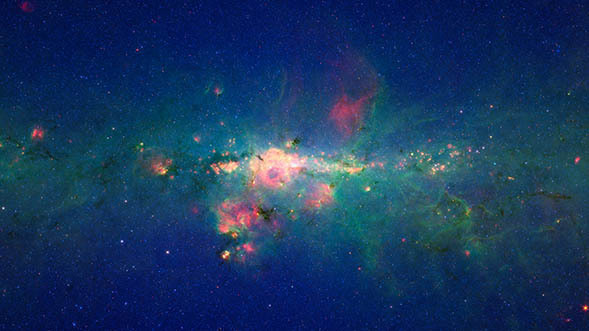
The bright and massive stars that dominate our night sky are actually a minority in the Universe. Most stars in the cosmos are too puny to even ignite thermonuclear fusion in their cores, thus they never visibly light up. Instead they emit primarily infrared light, which Spitzer could easily detect. Astronomers refer to these "failed stars" as brown dwarfs.
Scientists say that brown dwarfs may be extremely important for astronomers looking into the mystery of "dark matter." Galaxies are heavier than they look, and scientists use the term "dark matter" as an umbrella definition for all the material in the Universe that cannot be seen. They believe that there are two components to dark matter. A large fraction of dark matter is made up of exotic materials, different from the ordinary particles that make up the familiar world around us. Meanwhile, some dark matter may consist of dark celestial bodies like brown dwarfs, which do not produce optical light and are too faint to visibly detect from Earth.
Spitzer's supersensitive infrared eyes discovered thousands of brown dwarfs, and found evidence that some of these failed stars may even harbor planets.



